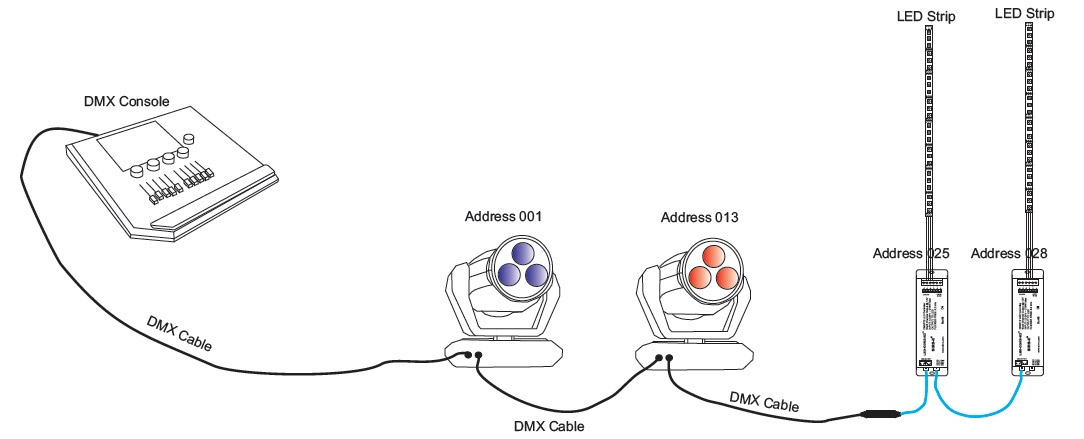 DMX, or Digital Multiplex, is a communication protocol that allows a single controller to manage multiple lighting fixtures. It is widely used in professional lighting systems for its reliability and precision, playing a crucial role in creating immersive environments in various industries.
DMX, or Digital Multiplex, is a communication protocol that allows a single controller to manage multiple lighting fixtures. It is widely used in professional lighting systems for its reliability and precision, playing a crucial role in creating immersive environments in various industries.
Applications of DMX Lighting
- Entertainment:
- DMX lighting is a staple in stage productions, concerts, plays, and musical performances, where dynamic and synchronized lighting enhances the audience’s experience.
- It is used to control spotlights, color washes, and moving lights.
- Broadcast Studios:
- DMX ensures precise lighting control for television studios, video production sets, and live broadcasts.
- Helps maintain consistent lighting levels and reduce shadows or glare.
- Architectural Lighting:
- DMX is employed to create visually stunning lighting displays in architectural projects, including building facades, bridges, and monuments.
- Ideal for dynamic light shows, color changes, and highlighting architectural features.
How DMX Lighting Works
DMX operates by sending a data signal from the controller to the fixtures via cables or wireless connections.
- 512 Channels per Universe:
- DMX can control up to 512 channels, collectively known as a “universe.”
- Each channel carries an 8-bit value (0-255), which adjusts specific fixture parameters like brightness, color, or movement.
- Fixture Addressing:
- Each light fixture is assigned a unique starting address within the DMX universe.
- This allows the controller to manage multiple fixtures independently or in groups.
- Control Capabilities:
- DMX can control intensity, color mixing (RGB or RGBW), pan/tilt movement, strobe effects, and even fog machines.
Features of DMX Lighting
- Lighting Presets (“Scenes”):
- DMX allows for preprogramming specific lighting setups, making it easy to switch between different scenes during a performance.
- Sequences (“Chases”):
- Multiple scenes can be linked into a sequence or chase, creating dynamic lighting effects over time.
- Special Effects Integration:
- DMX can also control other effects equipment, such as fog machines, lasers, or pyrotechnics.
Limitations of DMX Lighting
- Signal Strength:
- A DMX signal weakens after passing through 32 fixtures in a daisy chain. A signal amplifier or DMX splitter is often required for longer setups.
- Channel Limitation:
- Each DMX universe is limited to 512 channels. For larger systems, multiple universes and controllers are necessary.
- Latency in Complex Systems:
- In setups with multiple universes, coordination and timing might require additional management to avoid delays.
Conclusion
DMX lighting is an industry-standard tool for creating visually stunning and highly controlled lighting setups. While it has some limitations, its versatility and precision make it a preferred choice for professionals in entertainment, broadcasting, and architectural lighting.

